Offal for dogs: what can you give and how to choose them?
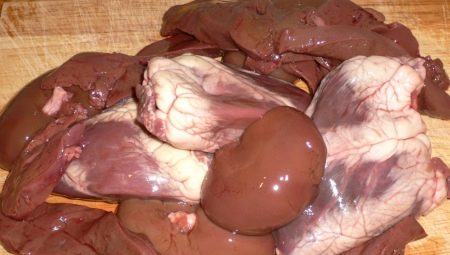
Protein sources should be at least 70% of the dog's diet. In addition to high-quality meat, animals are eager to consume meat offal - liver, heart, udder, as well as tripe and chicken offal. Despite their rather peculiar appearance and unpleasant aroma, these foods have great nutritional value for pets.
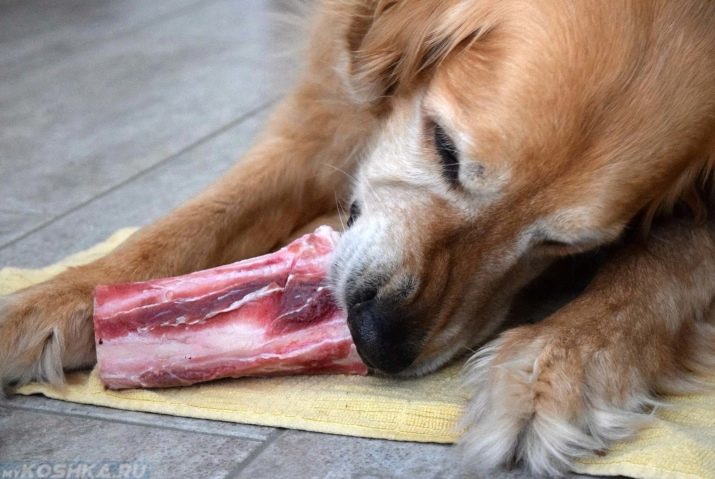
Advantages and disadvantages
Everyone knows that giblets contain much more useful vitamins, micro- and macroelements than muscle meat. They are a full-fledged source of proteins, which are considered the main building material for organs and tissues of every organism.
Giblets are rich in iodine, phosphorus, potassium, as well as zinc, iron and selenium - pets need these substances for growth and development.
It is important that these products contain increased concentrations of vitamins B, as well as A, E, K, and in the presence of vitamin D they simply have no equal among all other feeds.
This vitamin is one of the most important for all living things, since its absence leads to a reduced body resistance, muscular dystrophy and even cancer and autoimmune diseases.
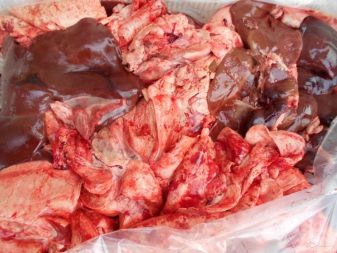
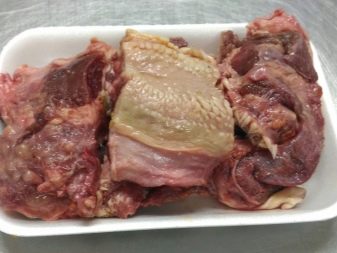
As in sea fish, the giblets contain a lot of Omega-3 and -6 acids, which are recognized as an invaluable source of useful energy for animal tissues.
Offal is good for all dogs but they are of particular value for animals living in the northern regions, where there are very few sunny days. Products are recommended for mandatory inclusion in the menu of dogs in the winter season. At the same time, there are very few carbohydrates in by-products, so they can be safely attributed to dietary products.
A pleasant bonus to such a set of useful properties of giblets will be their price - the heart, lungs, liver, tripe and other offal are much cheaper than regular beef or veal. Thus, their inclusion in the diet significantly reduces the breeder's costs for feeding the pet.

However, not all by-products are to the liking of animals. So, if the liver and heart are liked by all dogs, then the scar, kidneys, as well as lungs, spleen and similar products, many dogs simply cannot stand, even in minimal volumes. Moreover, some have an allergic reaction to them, which is expressed in diarrhea, vomiting, skin irritations on the face and near the ears, in the armpits and on the paws.
The dog begins to itch constantly, hair loss and the appearance of red spots are possible. It makes no sense to treat food allergies, the only way out when such a problem occurs is to exclude by-products from the animal's diet.
In addition, it should be borne in mind that offal will be a good addition to meat, but not a substitute for it, so their share in the pet's menu should not exceed 15%.

Views
The following by-products are suitable for feeding animals.
- Liver. This organ is considered a natural filter that traps all toxins in food, but does not accumulate them, contrary to popular belief, but removes it, therefore it can be safely included in the diet of your pet. The product is rich in retinol, which is considered a powerful antioxidant that significantly improves digestion and has a beneficial effect on the animal's reproductive system. There are many B vitamins in beef and pork liver, which help to improve nervous activity and blood supply to the brain.
The iron present in the by-product increases hemoglobin, participates in the metabolism and saturation of cells of all tissues and organs with oxygen. The liver is of particular benefit to young dogs and puppies and should be included in the diet of bitches during pre-mating and lactation periods.
Under the influence of elevated temperatures, beneficial trace elements in the liver are partially destroyed, therefore, it is advisable to give the product not in boiled, but in raw form. Keep in mind that sometimes it can contain larvae and eggs of helminths, therefore, only a product that has passed veterinary control is subject to inclusion in the pet's menu.
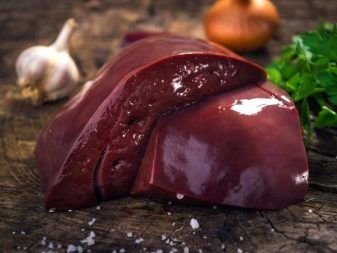
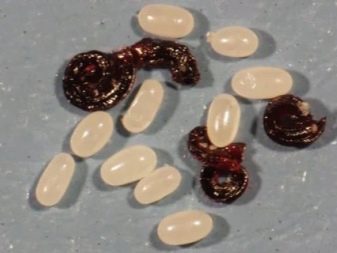
- Lung. In structure, this organ is a concentrated connective tissue, there are almost no proteins in it, and the calorie content is extremely low. The lung does not have any nutritional value for dogs and does not provide any benefit. Most often, the lung is dried and offered to pets for cleaning tartar.
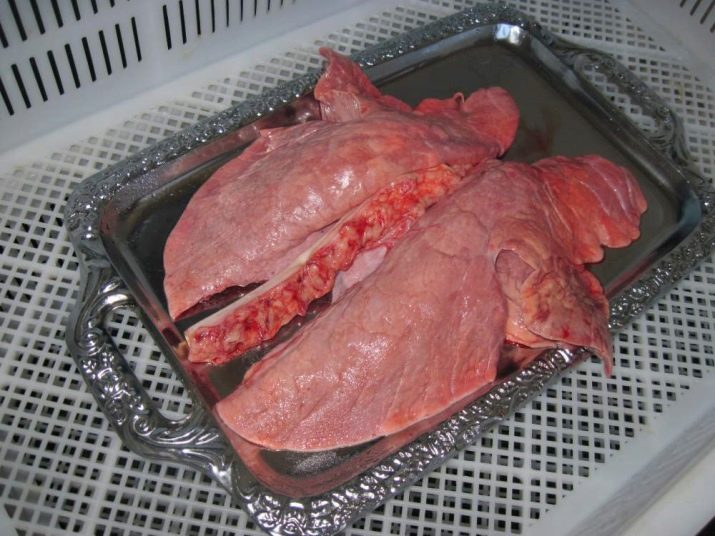
- Heart. It is a by-product rich in the immunomodulator coenzyme Q10, which plays a huge role in maintaining cellular immunity, inhibiting age-related changes and rejuvenating the body. The product is rich in zinc, selenium, phosphorus and B vitamins. The content of amino acids is also high in it, which help the animal build muscle mass, stock up on the necessary energy and develop physical endurance. The heart contains 1.5-2 times more elastane and collagen than muscle meat, which is important for the joints and cartilage of dogs. In structure, the product is similar to regular meat, but slightly heavier. The heart is introduced into the dog's diet raw.
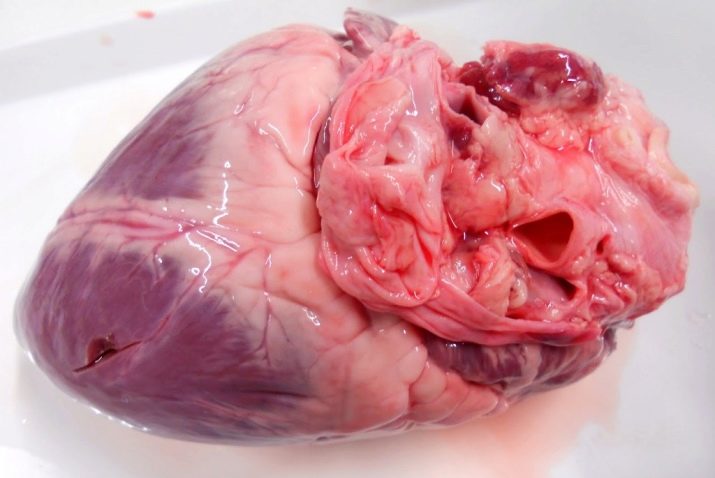
- Kidney... These by-products contain an increased concentration of vitamins A, E, K and B - these are components that help to improve the quality of the animal's coat, and also participate in the normalization of digestive processes. Before feeding, you need to cut the organ into several parts, soak for several hours in cold water to destroy the specific smell and give the dog raw.

- Udder It is rich in all vitamins necessary for the full development of a dog, but at the same time it includes a lot of adipose and connective tissue, therefore the portions of the product should be small.It should be noted that the udder is well absorbed by the four-legged body, its use contributes to the build-up of muscle mass and increase in strength.
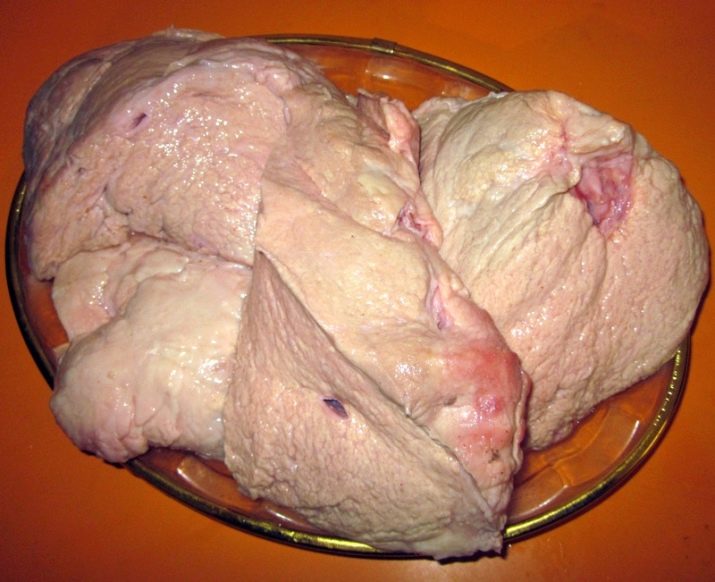
- Brain. It is an easily digestible food rich in useful choline and lipids. Especially useful are the brains of weakened dogs recovering from a serious illness. They are usually served boiled with rice or buckwheat.
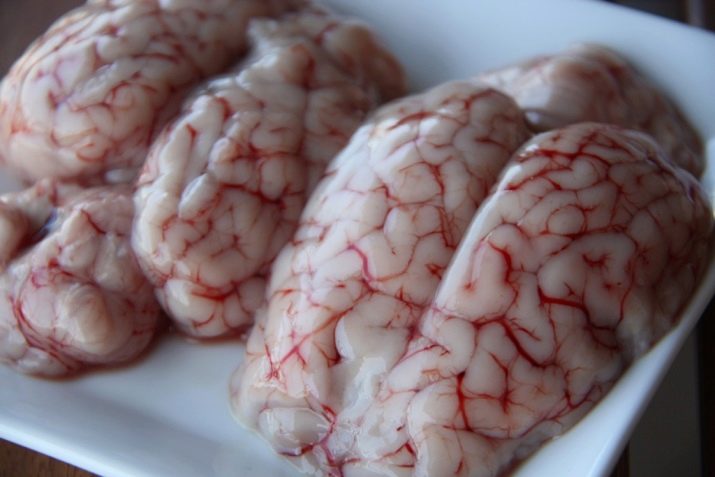
- Spleen... This by-product is rich in iron and high-quality protein. In terms of the concentration of amino acids, the spleen is close to that of beef liver. Nevertheless, do not forget that its excessive use leads to digestive disorders and black diarrhea, so its presence on the menu should be minimal.
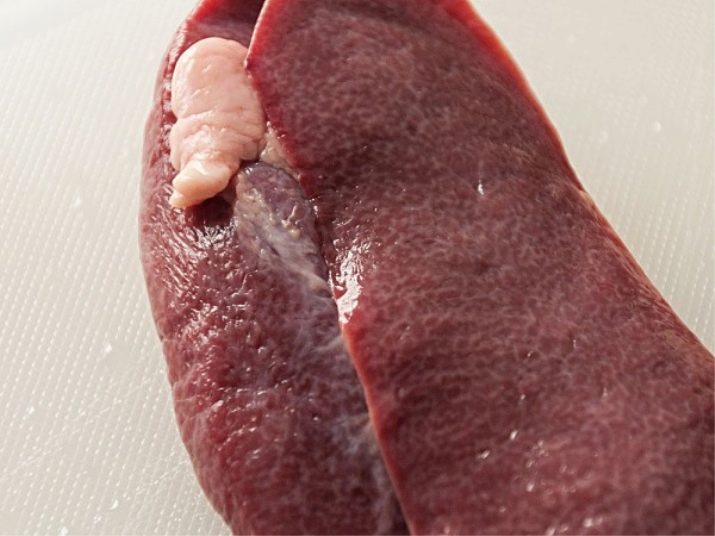
- Scar. It is a part of the stomach that is especially valuable in terms of the presence of vitamins and enzymes. The inclusion of such a product in the menu helps to improve the digestion of the animal, thanks to enzymes, the blood is purified from toxins and the immune system is strengthened. The rumen is nutritious for dogs, but not every animal loves it, since this product has a rather specific smell.
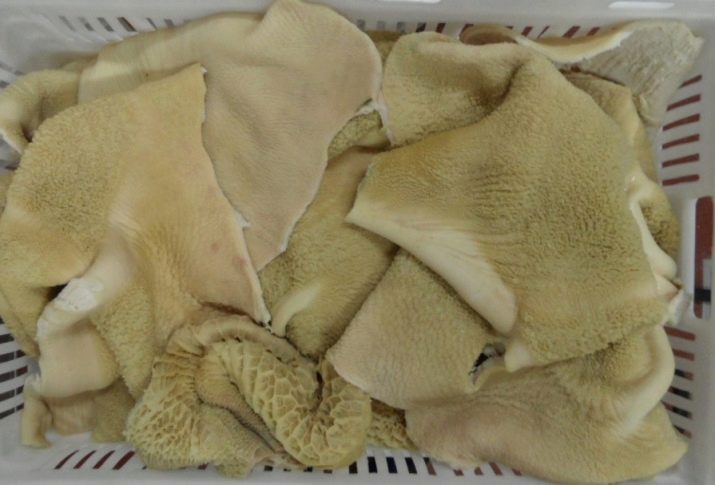
- Ears, tails, legs. There are practically no proteins in the listed products, but phosphorus and potassium are in excess, so they are considered an excellent trainer for the teeth and jaws of an animal. In addition, there are many tendons that contain collagen, so including them in your diet will benefit your dog's joints. Most often they are given to pets raw, but some owners prefer to cook these offal for about 3-4 hours. This is how a very rich broth is obtained, which, as it cools, turns into a shivering jellied meat.
It can be given to all dogs, without exception, from 4 weeks of age.


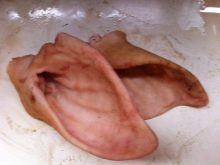
- Cartilage products. Kaltyk, as well as the diaphragm, trachea and epiglottis cartilage are distinguished by a high concentration of proteins, elastane and collagen, therefore they can be introduced into the dog's diet without fear.
These products effectively strengthen the teeth and jaws of dogs, and in addition are cheap and do not require additional processing.

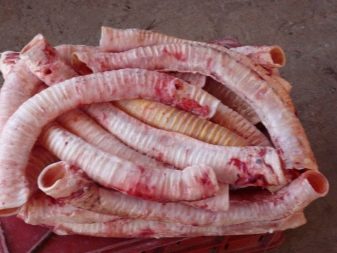
Bird guts
Inexpensive, but at the same time nutritious food for dogs is the heart, liver, as well as necks, paws and heads of birds. They almost do not cause allergic reactions, are rich in collagen (especially a lot of it is accumulated in the wings and necks), as well as protein - it is found in abundance in chicken paws and heads.
The nutritional value of poultry offal is not as high as that of beef, however, they can be a good addition to the daily diet of an animal. Hearts, liver and stomach are saturated with vitamins A and B, as well as trace elements - zinc, iron. Such offal can be given to dogs no more than 2 times every 7-10 days.
Spongy bones, necks and paws of chickens contain a lot of potassium and phosphorus, therefore they are indispensable for the formation of the musculoskeletal system. In addition, pets always benefit from the opportunity to grind their teeth on them.
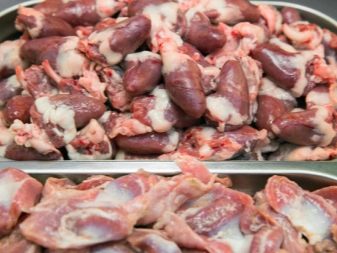
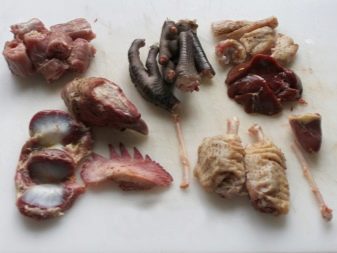
Please be aware that it is strictly forbidden to give tubular bones to animals, since their stomachs are not able to digest, and in a gnawed form, they can injure the stomach of dogs.
Very useful for dogs is minced meat from the bone remnant, which includes directly bone tissue, bone marrow and cartilage. It is given in combination with cereals, vegetables and meat.
Delicious and nutritious jelly can be made from chicken legs. After boiling, the broth is cooled, the bones are separated, the claws are removed and sent to solidify. Jellied meat can be offered to dogs both as an independent dish and together with cereals.
But chicken skin has no place in the bowl of your four-legged friend - this part of the carcass contains a lot of harmful cholesterol, therefore it does not carry any value to the dog's body.
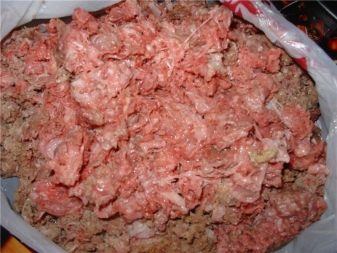
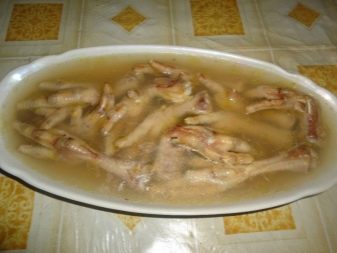
How to choose?
Dogs can be fed exclusively with fresh offal, which is obtained from healthy animals. It is advisable to purchase products on the market and in stores - that is, in those places where they undergo sanitary control.
Hand-bought offal often contains worms or signs of decay. Stale brains and spleen are especially dangerous for dogs. The main point indicating staleness of the food is the creamy consistency, earthy tint and unpleasant odor. In addition, the decomposition processes that have begun can be determined if the spleen, which looks fresh when cut, begins to darken.
Keep in mind that if your pet suffers from a digestive disorder, then the rumen, spleen, lungs, as well as kidneys and brains are not allowed on the menu. In this case, only the use of the heart, liver and cartilage products is allowed.

How much can you give?
It is advisable to accustom young dogs to giblets from six months, the use of chicken legs and necks is allowed from 2-3 months, and babies of an earlier age are allowed to feed only with broth or jellied meat.
The proportion of offal in the dog's diet should not exceed 15%, at the same time, you can give them a little every day, and you can replace meat with giblets 1-2 times a week. A complete transition to these products is unacceptable due to their low protein content and excessively high concentrations of vitamins and minerals.
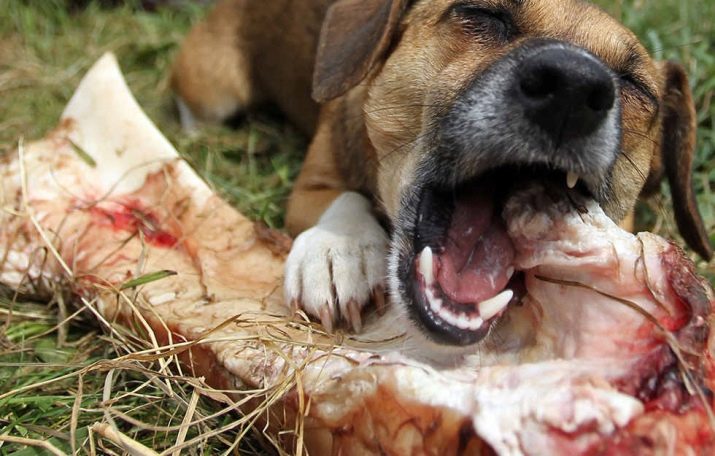
How to store and prepare?
After purchase, offal must be frozen for about 2 weeks in order to destroy all kinds of pathogenic microflora. If you have any doubts about the freshness of the product, throw it away, as a last resort you can soak them for about half an hour in a soda solution, then rinse under cold running water.
Before serving the dog, the frozen food is poured over with boiling water and finely chopped. A very good offal treat can be made by drying it. This can be done in several ways.
- In the dryer... Many housewives have such a gadget in the kitchen as a meat and fruit dryer. You can buy it at any hardware store. In order to prepare a treat for your dog, you need to freeze the bag of offal in the freezer for about 2 weeks, then defrost it in a natural way, rinse it thoroughly, cut it into thin pieces and send it to the device. It usually takes about 8 hours to prepare a treat.
- In the oven... Prepared meat is placed on a lattice covered with parchment and sent to the oven. Processing is carried out for about 6 hours at a temperature of 60-70 degrees, the door should be folded back.
- Outside. The by-products are cut into thin layers, strung on a rope and hung in a shady place. However, in this case, you cannot avoid the infestation of flies, therefore it is advisable to close the blanks with gauze.
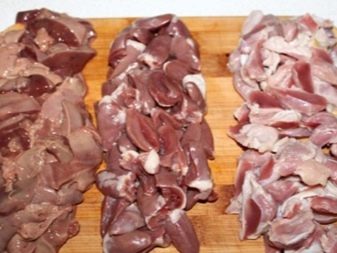
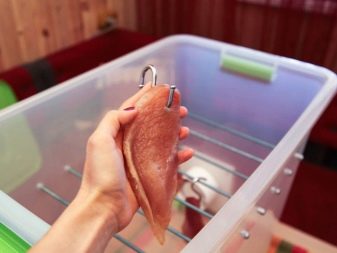
For information on why a dog needs offal and why it is undesirable to feed them only pure meat, see below.






































